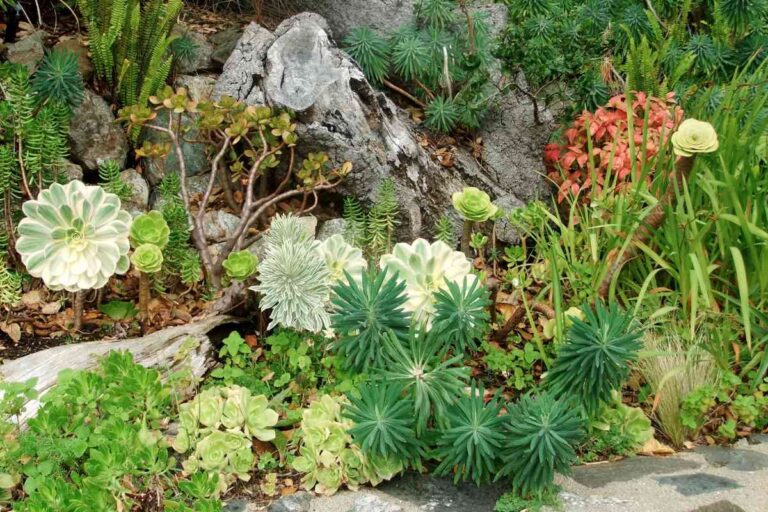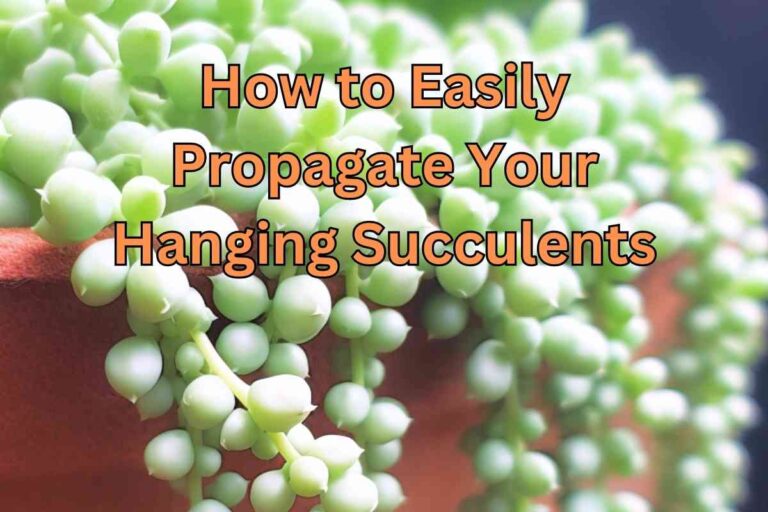How to Make Artificial Succulents Look Real: Tips and Tricks
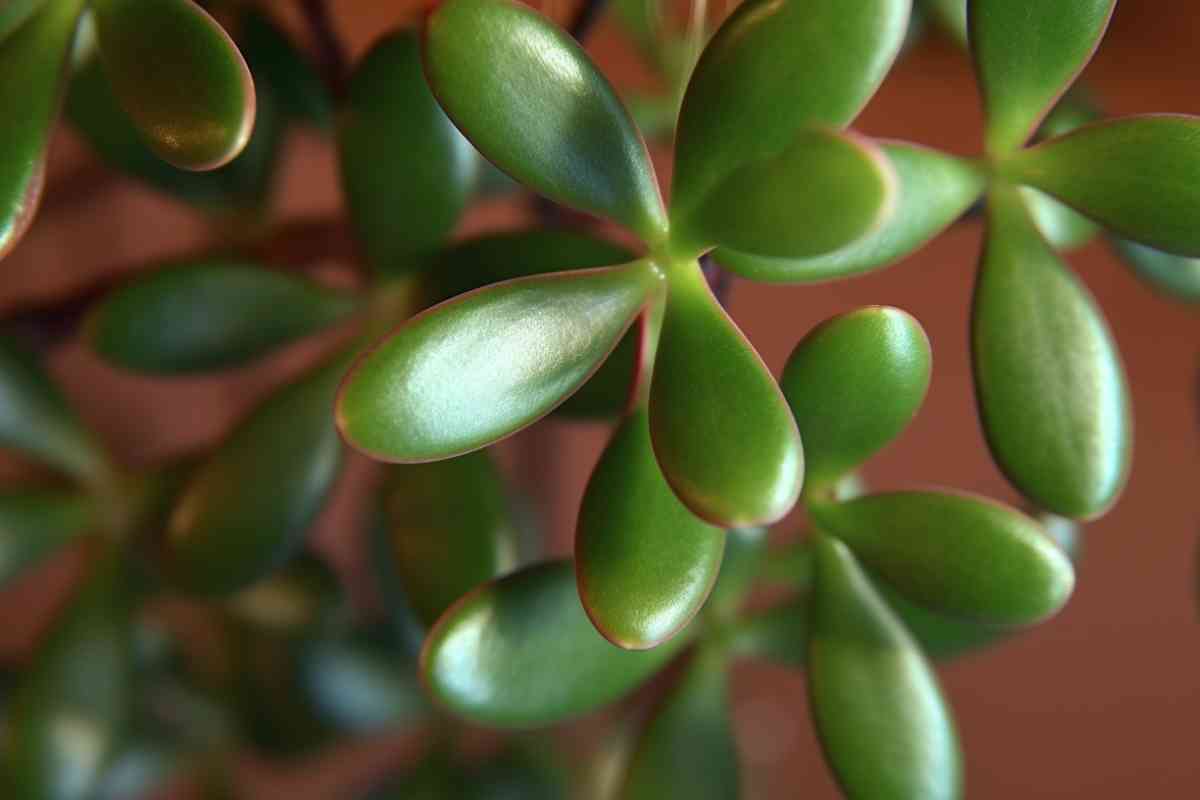
Artificial succulents are a great way to add some greenery to your home without the hassle of maintaining real plants. To keep them from looking fake, there are some simple tricks that I’m happy to teach you. I won’t tell if you don’t!
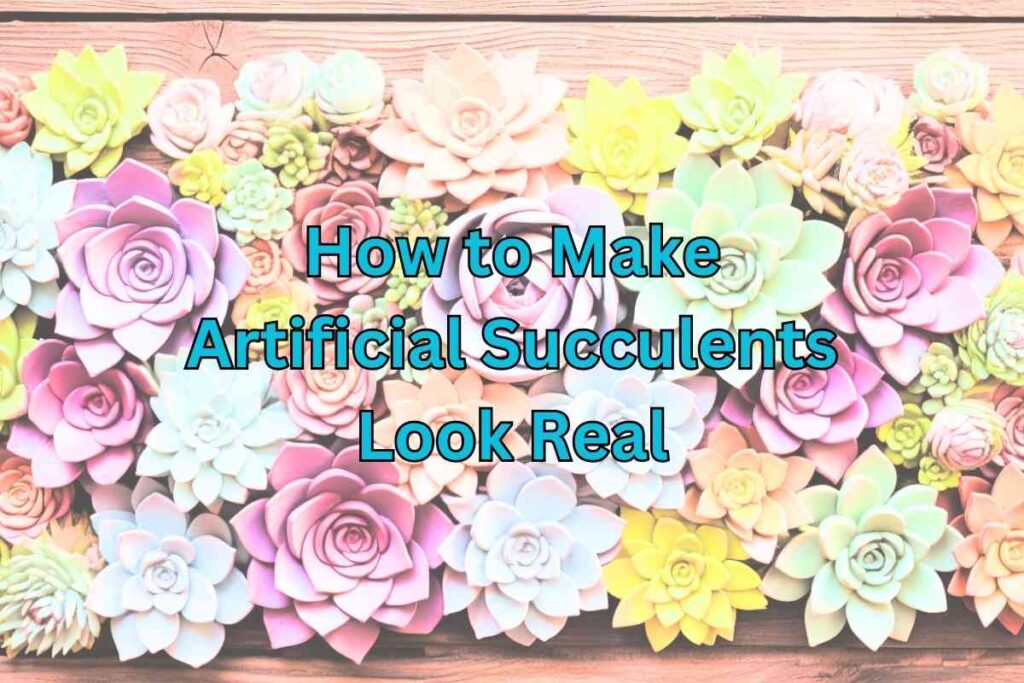
How to Make Artificial Succulents Look Real?
Make artificial succulents look real by choosing quality, realistic succulents, altering them with paint, sanpaper, resin and other tools, and arranging them in a natural way. Using living plants along with the artificial ones and real decor like soil, sand, and gravel makes artificial succulents look real as well.
Here’s everything you ever wanted to know about how to make a succulent arrangement that can trick even your green-thumbed guests.
Make sure to bookmark these most colorful succulents to inspire you as you’re choosing the right fake succulents for your project.
These succulent rock garden ideas are also a great inspiration if you’d like to incorporate elements like gravel, sand, and rocks into your artificial succulent arrangement.
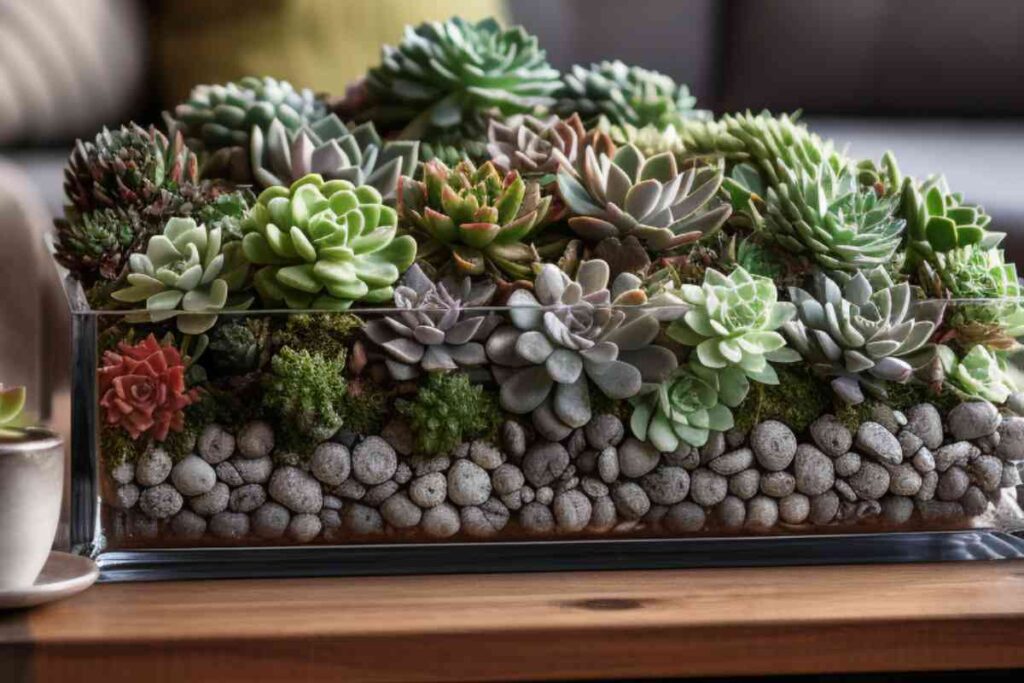
Understanding Artificial Succulents
Materials Used for Artificial Succulents
- Silk: Silk is a popular material for artificial succulents because it looks and feels like a real plant. It’s soft and pliable and can be easily shaped to fit any container or arrangement. However, silk succulents can be more expensive than other materials and isn’t as durable.
- Plastic: Plastic is a common material for artificial succulents because it’s affordable and long-lasting. Plastic succulents can be made to look very realistic, but they may not feel as natural as other materials. It’s a good choice for high up arrangements.
- Polyurethane: Polyurethane is a newer material used for artificial succulents that offers the best of both worlds. It’s soft and pliable like silk, but also durable like plastic. Polyurethane succulents can be more expensive than other materials, but they’re also more realistic and long-lasting.
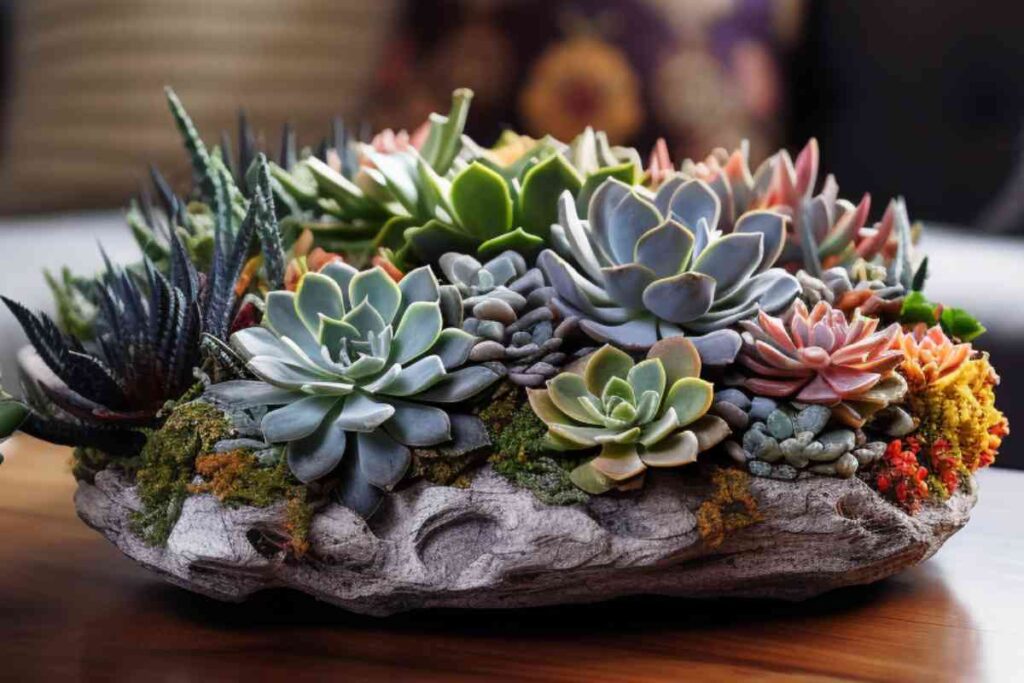
Choosing the Best Artificial Succulents
When choosing artificial succulents, there are a few things to keep in mind:
- Realistic Appearance: This may seem obvious, but it’s more complicated than you might think. Look for succulents that have the same texture, color, and shape as real succulents. Having pictures of real succulents available while you shop is helpful.
- Quality Materials: Choose succulents made from high-quality materials that will last for a long time. Polyurethane and silk are good options.
- Size and Shape: Consider the size and shape of the succulents in relation to the container or arrangement you plan to use them in. Choose succulents that are proportional to the space.
- Variety: Mix and match different types of succulents to create a more natural and diverse look. Consider the colors, shapes, and sizes of the succulents when choosing which ones to use.
- Color: The color of the artificial succulent should be realistic. Look for succulents that have natural-looking colors and shades. Avoid succulents that have bright, unnatural colors.
- Texture: If possible, feel the leaves and stems to see if they have a natural texture
- Brand: A fast way to ensure you get good artificial succulents is to choose a reputable brand, which are more likely to produce high-quality artificial succulents that look real.
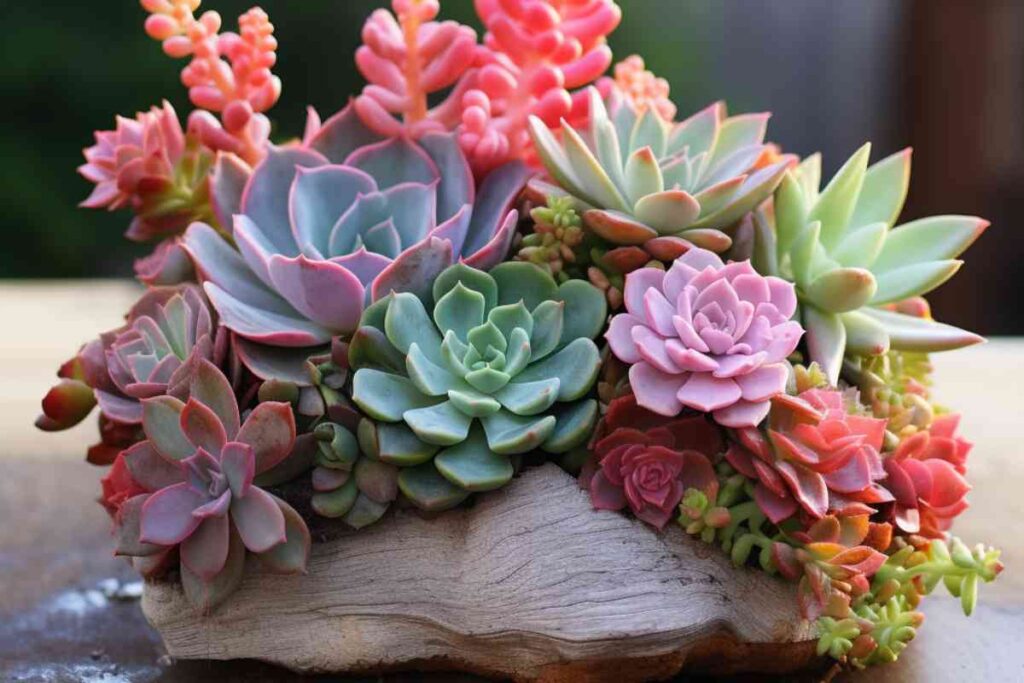
Why Use Artificial Succulents?
- Pets: If you have pets that are curious or tend to nibble on plants, artificial succulents can be a safe alternative. Unlike real succulents, which may be toxic to animals if ingested, artificial ones eliminate this concern while still providing a decorative touch.
- Children: Artificial succulents eliminate the risk of children accidentally ingesting or harming themselves with prickly thorns or spines that some real succulents possess. They are child-friendly and can be placed in playrooms, bedrooms, or other areas where safety is a priority.
- Low light conditions: Succulents typically thrive in bright sunlight, but not all indoor spaces provide adequate light. Artificial succulents don’t require sunlight, making them ideal for areas with low light, such as rooms without windows or shaded corners.
- Travel: For frequent travelers or individuals who are away from home often, artificial succulents are a practical choice. They don’t require watering or care, ensuring that your plants look vibrant and healthy even during extended periods of absence.
- Always looking good: Natural succulents may require specific care routines to maintain their appearance. In contrast, artificial succulents always look fresh and vibrant without any effort. They won’t wilt, shed leaves, or show signs of distress, ensuring that your space consistently maintains an attractive aesthetic.
- Office settings: Offices often have limited access to natural light and may not provide an ideal environment for live plants. Artificial succulents can bring the beauty of nature into office spaces without the need for sunlight or regular maintenance, creating a welcoming and calming atmosphere.
- Creative freedom: With artificial succulents, you have unlimited creative freedom. You can choose from a wide variety of shapes, sizes, and colors, allowing you to create unique arrangements that suit your personal style and complement your decor.
- Long-lasting: Artificial succulents are durable and long-lasting. Unlike real succulents that may require replacement due to natural growth patterns or seasonal changes, artificial ones will remain the same, offering beauty and enjoyment for years to come.
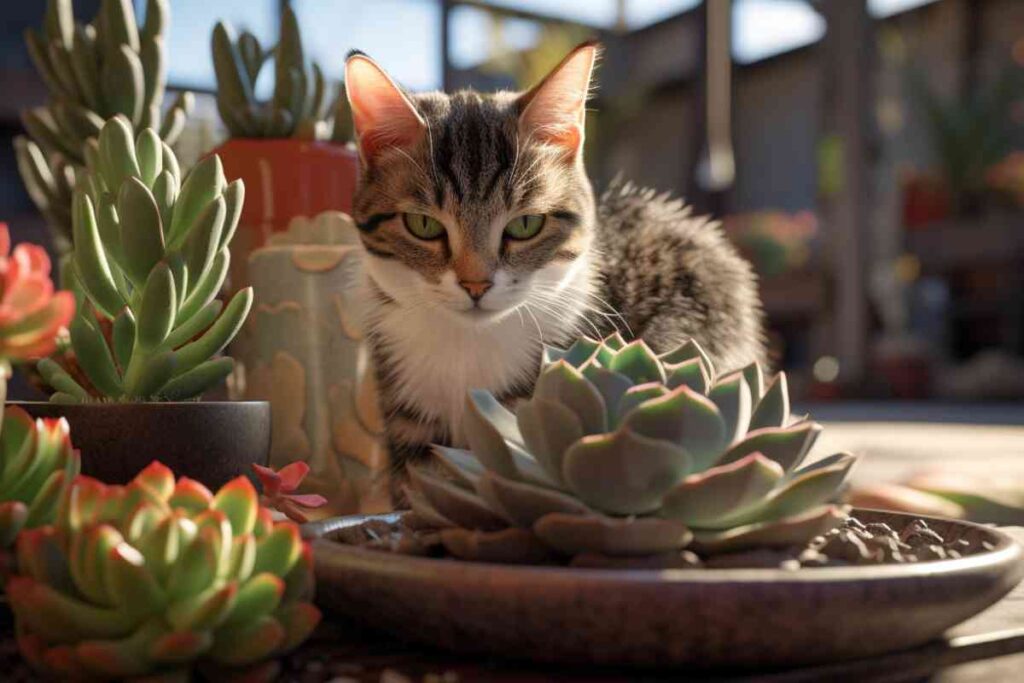
Techniques to Make Artificial Succulents Look Real
Color Modification
Real succulents come in a variety of colors, from bright greens to muted grays and blues. To achieve a more realistic look, you can modify the color of your artificial succulents by using the following techniques:
- Use acrylic paints to add subtle variations in color to your faux succulents to mimic the natural color variations found in real succulents.
- Apply a light dusting of spray paint to give your faux succulents a more natural-looking texture.
- Use sponges, brushes, and even real leaves and sticks to create diverse natural colors throughout the succulent.
Texture Enhancement
Real succulents have a unique texture that can be difficult to replicate in artificial versions. However, there are a few techniques you can use to enhance the texture of faux succulents:
- Use sandpaper or a nail file to create a more natural-looking surface.
- Apply a light coat of clear glue to the leaves of your faux succulents and sprinkle sand to create a textured, realistic look.
- Use a heat gun to soften the leaves of your faux succulents and create a more natural-looking shape.
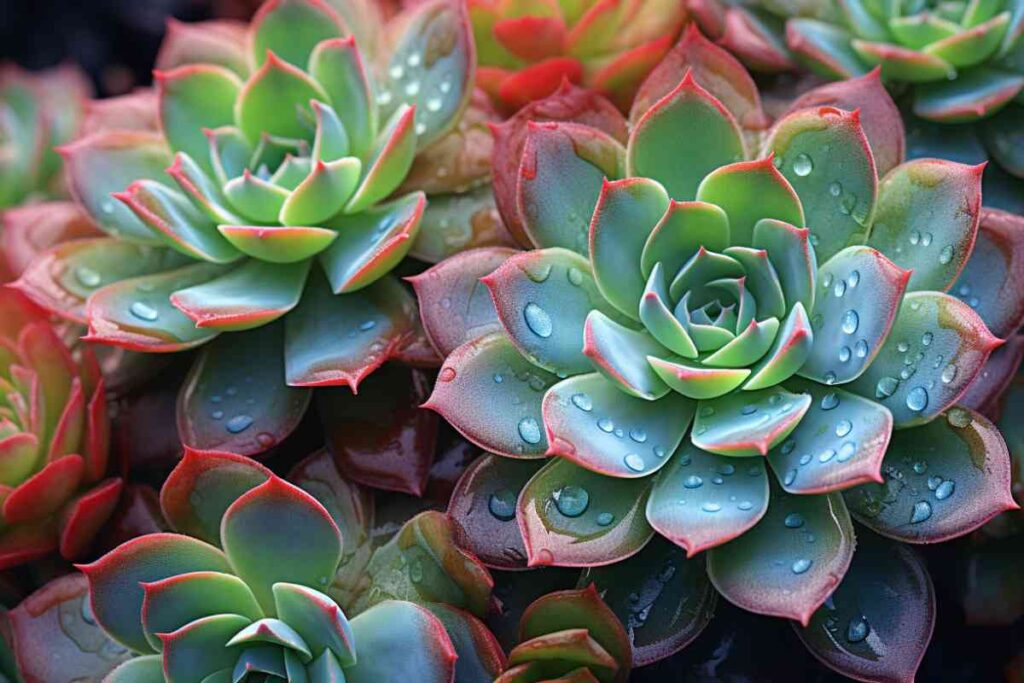
Adding Realistic Details
Real succulents often have small details, like tiny hairs or bumps on the leaves. There are a few techniques you can use to add these details to your faux succulents:
- Use a fine-tipped paintbrush to add small details, like tiny hairs or bumps, to the leaves of your faux succulents.
- Use a razor blade or sharp knife to make indentations on the succulent to mimic natural irregularities.
- Use a clear glue to attach small pieces of gravel, rock, or other natural materials to the base of your faux succulents to create a more realistic look.
- Add a few drops of glue or resin that dries clear on the leaves to look like dewdrops.
Proper Placement of Artificial Succulents
Choosing the Right Location
One of the fun things about artificial succulents is that you can put them wherever you want. However, where you put them has a big effect on how real they look.
Artificial succulents can look fake if they are placed in areas with too much or too little light. Ideally, it should look conceivable that the plant has enough light to grow where it is.
At the same time, too much light reveals everything about the succulent that could make it look fake. Areas with indirect or filtered light are best for the look of the succulent and to avoid fading or discoloration.
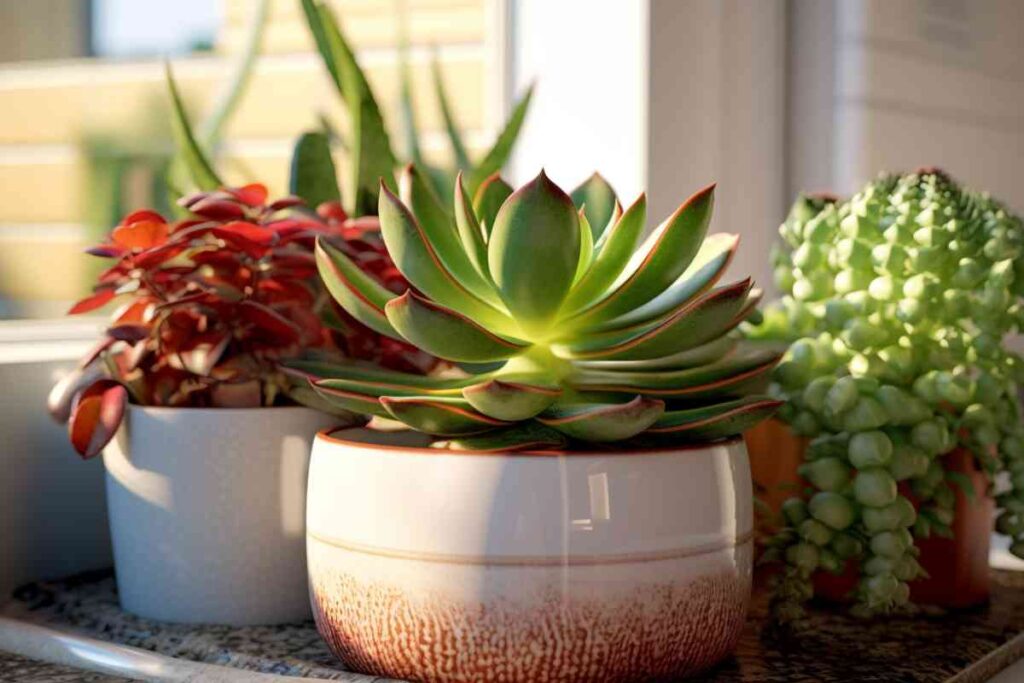
Mixing with Real Plants
Artificial succulents can be mixed with real plants to create a natural-looking arrangement. This technique is one of my favorites for throwing off even my green thumbed friends.
When mixing artificial and real plants, it is important to choose plants with similar colors and textures. This will help create a cohesive look and ensure that the artificial plants do not stand out.
It’s best to choose plastic or polyurethane succulents for this technique, as watering can damage silk succulents.
Use Real Elements in the Arrangement
When it comes to making artificial succulents look more realistic, incorporating real soil, sand, gravel, and rocks can make a significant difference.
Start by placing a layer of real soil around the succulents. This provides a natural foundation for the rest of the decor. Gently press the soil down to create a firm base.
Next, sprinkle a thin layer of sand or gravel over the soil to mimic the texture and appearance of the top layer found in natural succulent arrangements. Add some small rocks or pebbles strategically around the succulents.
Take a step back and assess the arrangement. Make any necessary adjustments to the positioning of the succulents, soil, sand, gravel, and rocks to achieve a balanced and visually pleasing composition.
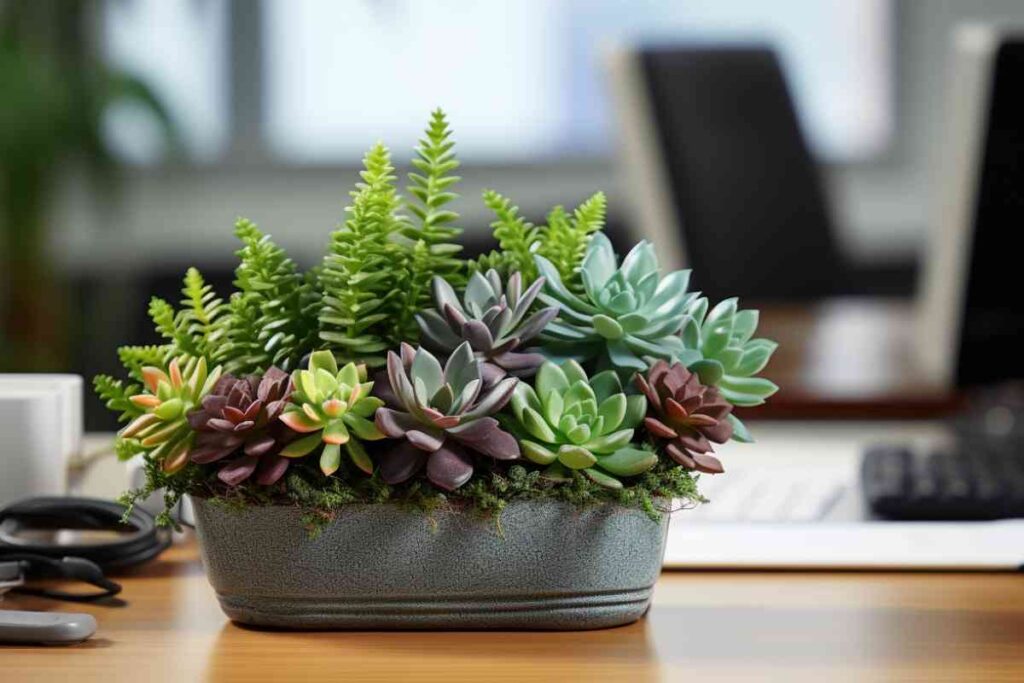
Maintaining the Realistic Look
To keep your artificial succulents looking as real as possible, there are a few maintenance tips to follow. Regular cleaning and periodic rearrangement can help preserve their natural appearance.
Regular Cleaning
Dusty succulents never look good, so it’s essential to keep them clean. You can use a feather duster or a soft-bristled brush to remove any dust or debris that accumulates on the leaves and stems. If the plants are particularly dirty, you can also use a damp cloth or sponge to wipe them down gently.
For more stubborn stains or grime, use a mild soap solution to clean the leaves. Mix a few drops of dish soap in a bowl of warm water and dip a cloth or sponge in the mixture. Wring out the excess water and wipe down the leaves, making sure not to get any water on the base or stem of the plant.
Touch Ups
As time goes by, succulents can become dull and lose their color. Occasionally adding some paint or even a bit of mineral oil to give them back their shine can be helpful.
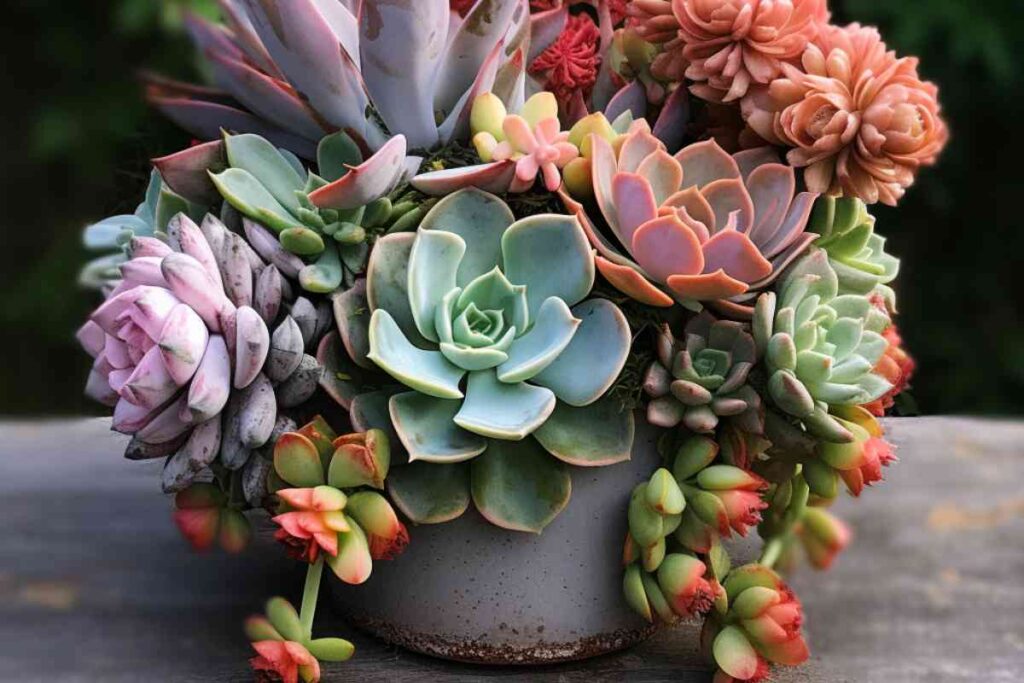
Here’s even more in-depth information about how to plant artificial succulents.
These succulent fairy garden ideas are sure to inspire amazing projects with your artificial succulents.
Frequently Asked Questions
How can I make artificial succulents look more realistic?
There are several ways to make fake succulents look more realistic. One way is to add some natural elements to the arrangement, such as real soil, rocks, or moss. Another way is to place the fake succulents in a container that resembles a real planter. You can also try arranging the succulents in a way that mimics how they would grow in nature.
What are some tips for making fake succulents look real?
Some tips for making fake succulents look real include choosing high-quality artificial plants, using natural elements to enhance the arrangement, and paying attention to the details, such as the color and texture of the leaves. It’s also important to place the succulents in a location where they would naturally grow, such as a windowsill or a sunny spot.
Are there any special techniques for making faux succulents look more natural?
One special technique for making faux succulents look more natural is to add some variation in the arrangement. For example, you can mix different types of succulents together, or add some real plants or flowers to the arrangement. Another technique is to use different shades of green to create a more natural-looking color palette.
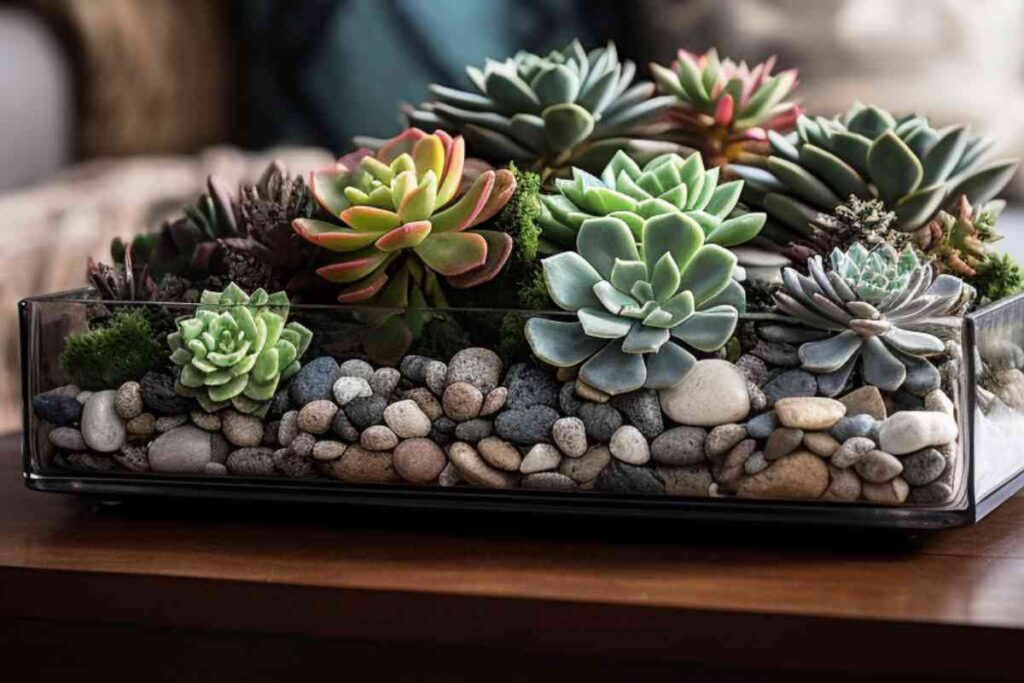
What materials can I use to enhance the realism of fake succulents?
You can use a variety of materials to enhance the realism of fake succulents, such as real soil, rocks, moss, sand, or pebbles. Resin or glue can be dripped on the leaves like rain drops.
Can I use paint or other products to make fake succulents look more lifelike?
Yes, you can use paint or other products to make fake succulents look more lifelike. However, it’s important to choose products that are safe for use on artificial plants, as some products may damage the material. Use a fine-tipped brush to add some detail to the leaves or to create a more natural-looking color variation.
What are some common mistakes to avoid when trying to make artificial succulents look real?
Some common mistakes to avoid when trying to make artificial succulents look real include using too much glue or adhesive, using materials that are not suitable for artificial plants, and overcomplicating the arrangement. It’s also important to avoid using too many fake plants in one space, as this can make the arrangement look cluttered and unnatural.

